Galleries
Will Oscar Murillo’s Colombian Chocolate Factory Stunt Damage David Zwirner’s Brand?
The art star's show at Zwirner is just a spectacle (no thought). But hey, free candy!
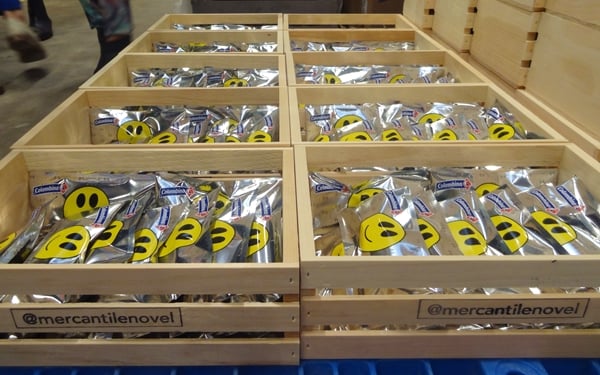
The art star's show at Zwirner is just a spectacle (no thought). But hey, free candy!

Benjamin Sutton

The 28-year-old, Colombia-raised, UK-based artist Oscar Murillo has become a mascot of the resurgent art market post-2008. His squiggly, expressionistic paintings with fragments of text surrounded by swirling oil stick marks, smears of dirt and concrete, and other rugged materials began flying off the studio floor (where he does much of his painting, Pollock-style) around the beginning of the decade, long before he got picked up by David Zwirner, where his first solo show opens today.
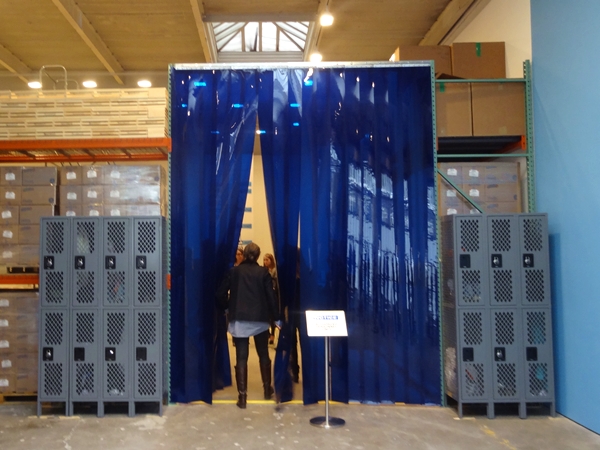
Oscar Murillo, A Mercantile Novel installation view at David Zwirner.
Photo: Benjamin Sutton.
But you won’t find any Murillos on the walls at 519 West 19th Street; instead, the artist has opened a candy factory inside the gallery, which will crank out free chocolate-covered marshmallows through June 14. This may seem like a departure, but for Murillo it’s actually a return to his roots.
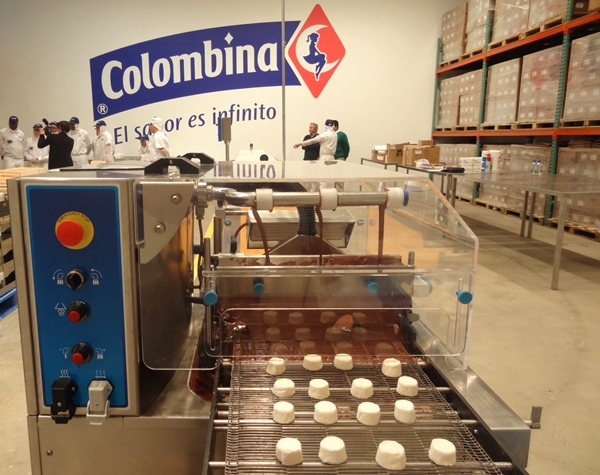
Oscar Murillo, A Mercantile Novel installation view at David Zwirner.
Photo: Benjamin Sutton.
The assembly line installation, A Mercantile Novel (2014), is a collaboration with the Colombian candy manufacturer Colombina and based on a similar plant in Murillo’s hometown of La Paila. Many members of the artist’s family have worked there since it opened in the early-20th century, packing up the company’s well-known Chocmelos candy. Thirteen Colombina workers have been flown from Colombia to Chelsea to run the satellite factory-artwork, and video documentation of their journeys and experiences plays on screens near the front of the gallery space. Nearby, a low shelf holds about two dozen boxes of Jeff Koons’s limited edition Dom Perignon bottles, each adorned with a Murillo drawing based on Koons’s balloon rendering of the Venus of Willendorf. It is the only reminder that you are in one of the art world’s most high-stakes sales rooms. In virtually every other regard, this is just a chocolate factory.
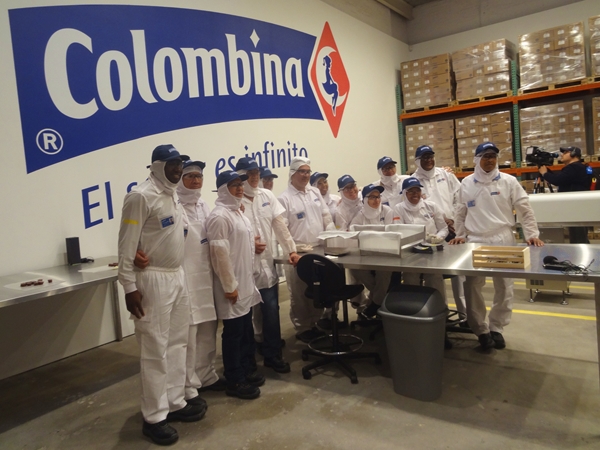
Oscar Murillo, A Mercantile Novel employees at David Zwirner.
Photo: Benjamin Sutton.
Most visitors won’t get to see the conveyor belt that carries the marshmallows under a small cascade of milk chocolate, through a covered cooling tube, and into the waiting hands of the packers who slip the Chocmelos, three at a time, into the Murillo-designed wrapper—a silvery pouch sporting Colombina insignia and the artist’s rendering of the smiley face adorning so many of New York’s plastic bags. (Text on the back of the wrapper explains the candies’ art project origins before asserting “not for individual sale,” but let’s see how long it takes for someone to flip one on eBay.) In order to maintain quality control and hygiene standards, visitors are prohibited from passing through the blue plastic curtains and onto the factory floor, but a line of screens opposite the front desk shows a live feed of the activity beyond.
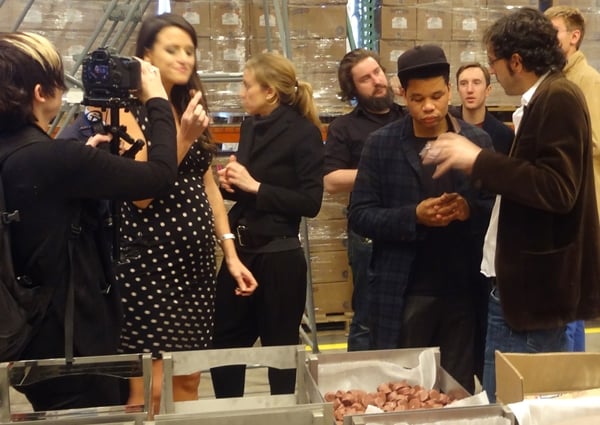
Oscar Murillo preyed upon by press at David Zwirner.
Photo: Benjamin Sutton.
Beyond fitting nicely with David Zwirner’s recent string of crowd-pleasing extravaganzas—after all, everybody likes free candy!—Murillo’s installation is intended to raise questions about labor, globalization, outsourcing, and migrant workers. His project earlier this year at Los Angeles’s new art space the Mistake Room took on similar themes, without taking them quite so literally. Coming face to face with a dozen Colombian chocolate factory workers in the heart of Chelsea is, if nothing else, a profoundly weird experience—even more so in light of their all-white, hazmat suit-like uniforms. But beyond the big-budget bringing-together of these disparate sites of production and consumption, the whole affair feels flat.
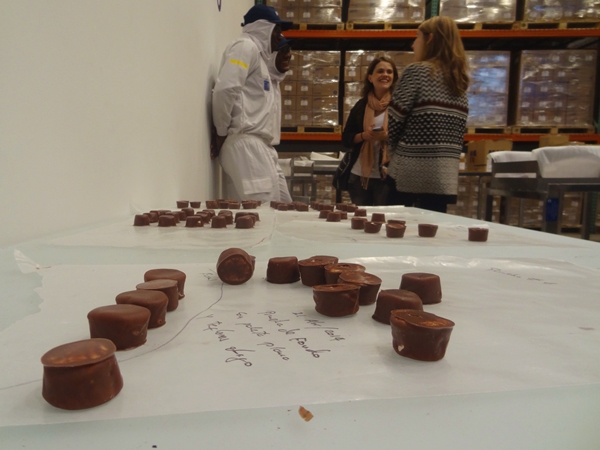
Oscar Murillo, A Mercantile Novel installation view at David Zwirner.
Photo: Benjamin Sutton.
Ideas about the global flow of economics, labor, and culture (and candy) come up in a completely perfunctory way and just as quickly forgotten. This is in no small part thanks to the ludicrous press release, which asserts that “the Colombina factory becomes a catalyst for a consideration of socio-economic conditions in the United States, Colombia, and beyond.” A video piece shot on location in La Paila could easily have put into play a similar tag cluster of vaguely topical economic themes, and would have imparted a more tangible emotional and autobiographical component to the project by situating the artist in his hometown. Instead, this comes off as an over-produced, under-thought conceptual apparatus.
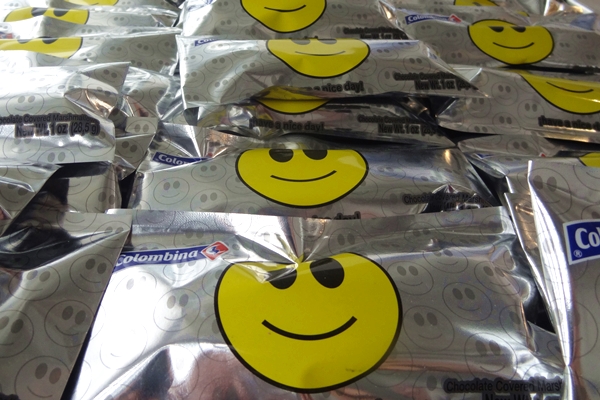
Oscar Murillo, A Mercantile Novel installation view at David Zwirner.
Photo: Benjamin Sutton.
As it stands, A Mercantile Novel feels as sterile as the assembly line at its center. From an artist known for his messy, chaotic canvases, this is all the more galling. It comes off as the Nestlé of chocolatey art production projects, as compared to, say, the far more engaging Mast Brothers-like artisanal enterprise put in place by the father-son team of Dieter Roth and Björn Roth at Hauser & Wirth last year. Murillo’s project seems to have so much money and corporate support behind it that it has become indistinguishable from the machinery of free-market capital that it supposedly sets out to question. His allegedly substantive engagement with global networks of money, labor, culture, and food, is about as satisfying as one of Colombina’s chocolate-covered marshmallows.
Oscar Murillo’s “A Mercantile Novel” continues at David Zwirner through June 14.
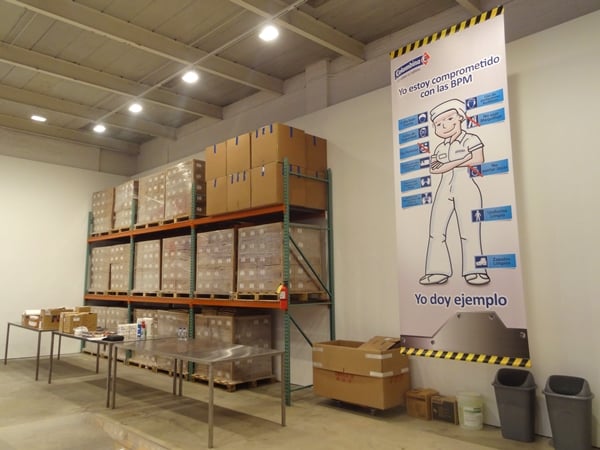
Oscar Murillo, A Mercantile Novel installation view at David Zwirner.
Photo: Benjamin Sutton.